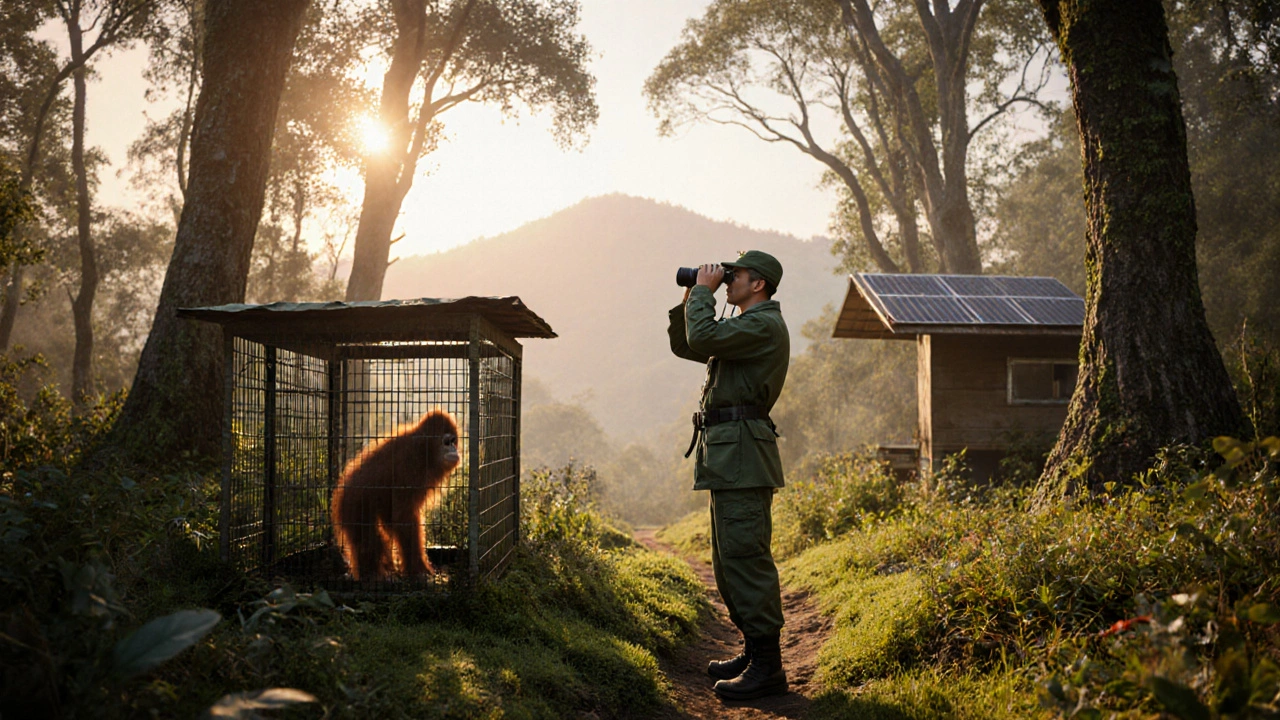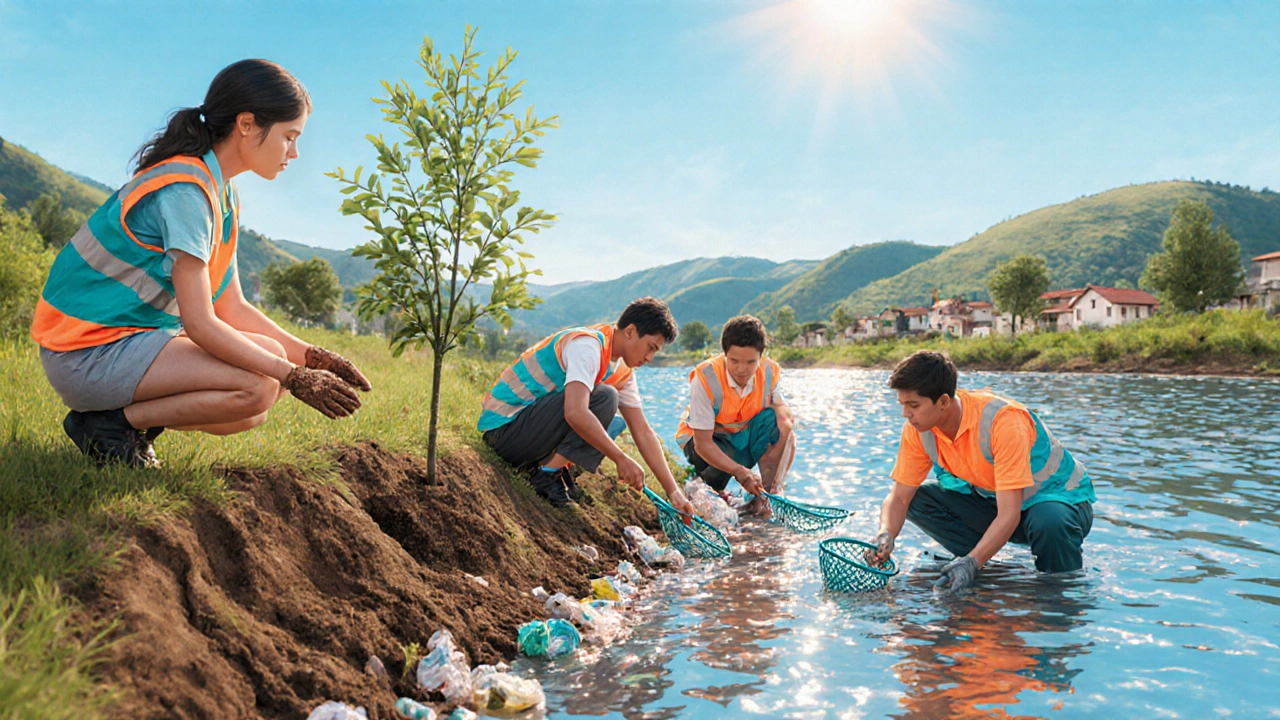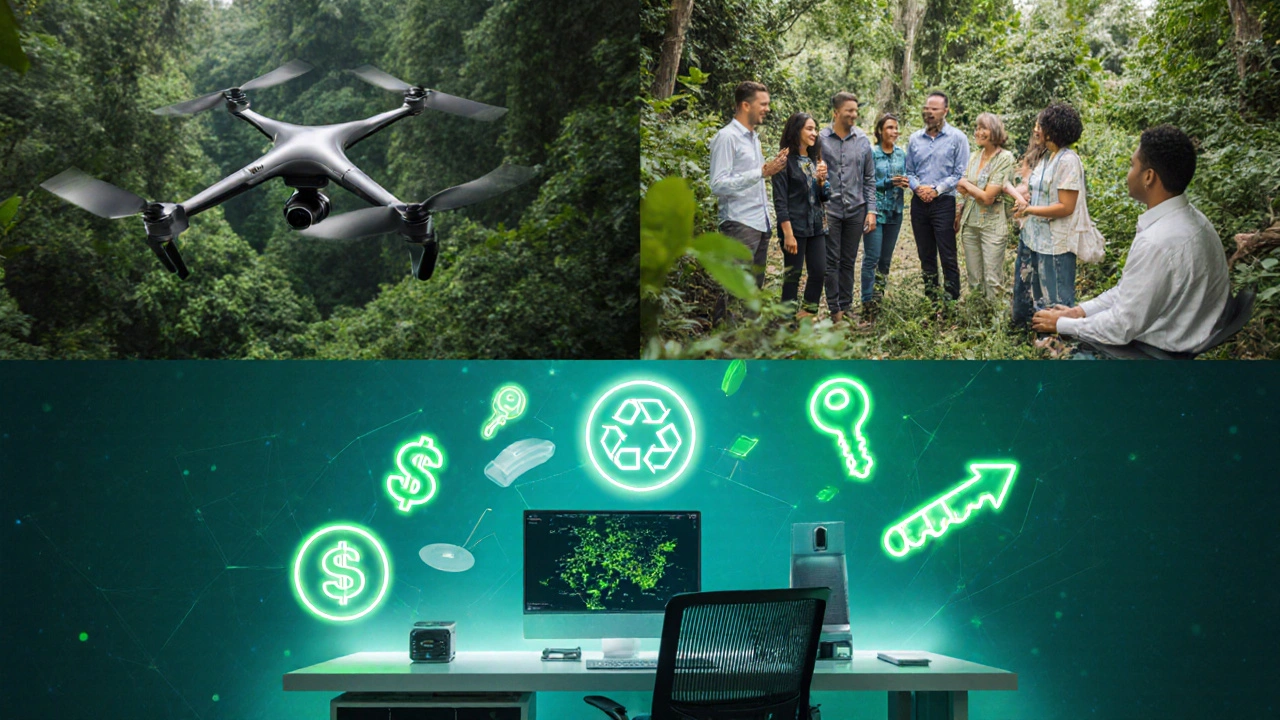5 Types of Ecological Organizations Explained
 Oct, 23 2025
Oct, 23 2025
When you hear the words "ecological organizations" you probably picture a big charity or a protest group, but the reality is far richer. There are five distinct ways these groups organize themselves, each with its own mission, funding model, and way of making an impact. Knowing which type fits your values can help you volunteer, donate, or even start your own initiative.
Quick Takeaways
- Ecological organizations fall into five main types: Conservation NGOs, Community‑based groups, Advocacy organizations, Research institutes, and Green social enterprises.
- Each type differs in focus, funding sources, and typical activities.
- Examples include WWF (Conservation NGO), Friends of the Earth (Advocacy), and the Sierra Club’s Community Forest Program (Community‑based).
- Understanding these differences lets you choose the right way to get involved or support.
- A simple comparison table can help you match your interests with the right organization.
What is an Ecological Organization?
Ecological organization is a group that works to protect, restore, or sustainably manage natural ecosystems and wildlife. These entities can be charities, NGOs, research bodies, or profit‑driven social ventures. Their common goal is a healthier planet, but the routes they take vary widely.
1. Conservation NGOs
Conservation NGOs focus on preserving species, habitats, and biodiversity. They often own or manage land, run protected‑area programs, and conduct fieldwork to monitor wildlife.
Key traits:
- Funding: Grants from foundations, government contracts, and individual donations.
- Activities: Habitat restoration, anti‑poaching patrols, wildlife rescue.
- Examples: World Wildlife Fund (WWF), The Nature Conservancy.
If you love field trips and hands‑on work with animals, a conservation NGO is a natural fit.
2. Community‑Based Environmental Groups
These groups arise from local neighborhoods or Indigenous communities and aim to solve environmental problems that directly affect their daily lives.
Typical characteristics:
- Funding: Small grants, community fundraising, and occasional municipal support.
- Activities: River clean‑ups, tree‑planting drives, local recycling schemes.
- Examples: Friends of the River Tyne, Sierra Club’s Community Forest Program.
Because they work at the grassroots level, these groups often provide the fastest visible change in a neighborhood.
3. Advocacy Organizations
Advocacy NGOs aim to influence policy, public opinion, and corporate behaviour. Their power lies in lobbying, campaigning, and media outreach.
Key points:
- Funding: Membership fees, major donor contributions, and campaign grants.
- Activities: Legislative lobbying, public demonstrations, digital petitions.
- Examples: Friends of the Earth, Greenpeace.
If you’re comfortable speaking up, writing letters to MPs, or organizing rallies, the advocacy route may suit you.

4. Research Institutes and Think Tanks
These entities generate the scientific evidence and policy recommendations that underpin effective environmental action.
Salient features:
- Funding: Research grants, university partnerships, and contracts from governments or NGOs.
- Activities: Field studies, data analysis, publishing peer‑reviewed papers, policy briefs.
- Examples: Royal Society for the Protection of Birds (RSPB) Science Department, UK Centre for Ecology & Hydrology.
People who love numbers, lab work, or writing reports often gravitate toward research institutes.
5. Green Social Enterprises
These are profit‑oriented businesses that embed ecological goals into their core model. Revenue is reinvested to further environmental impact.
Typical markers:
- Funding: Sales, impact‑investment funds, and sometimes government incentives.
- Activities: Sustainable product design, circular‑economy services, carbon‑offset platforms.
- Examples: Terracycle, Ecovative Design.
If you have an entrepreneurial streak and want to turn green ideas into market solutions, this is the path.
Comparison of the Five Types
| Type | Main Focus | Typical Funding | Core Activities | Representative Example |
|---|---|---|---|---|
| Conservation NGO | Species & habitat protection | Grants, donations | Protected‑area management, wildlife rescue | World Wildlife Fund (WWF) |
| Community‑Based Group | Local environmental improvement | Community fundraising, small grants | River clean‑ups, tree planting | Friends of the River Tyne |
| Advocacy Organization | Policy & corporate change | Membership fees, major donors | Lobbying, campaigns, protests | Friends of the Earth |
| Research Institute | Scientific knowledge generation | Research grants, contracts | Field studies, reports, policy briefs | UK Centre for Ecology & Hydrology |
| Green Social Enterprise | Market‑based ecological solutions | Sales, impact investment | Sustainable product design, circular services | Terracycle |
How to Choose the Right Organization for You
- Identify your passion. Do you care most about wildlife, local clean‑ups, policy change, science, or business?
- Assess your skill set. Hands‑on field work? Writing and research? Public speaking?
- Consider time commitment. Some NGOs need weekends on the ground; research institutes may demand a regular schedule.
- Check funding transparency. Look for annual reports or charity regulator listings.
- Start small. Volunteer for a single event before committing long‑term.
Following these steps helps you avoid the common “I signed up, then realized it wasn’t a fit” trap.

Common Pitfalls and How to Avoid Them
- Green‑washing. Some groups claim eco‑focus but spend most money on admin. Verify expense ratios.
- Mission drift. Organizations can shift from conservation to fundraising. Review mission statements annually.
- Volunteer burnout. Over‑committing leads to dropout. Balance with personal life.
Getting Involved Right Now
Ready to act? Here are three quick actions tailored to each type:
- Conservation NGOs: Donate a one‑off £20 to WWF’s “Species Survival” fund.
- Community Groups: Join the next river clean‑up organized by Friends of the River Tyne (check their Facebook).
- Advocacy Orgs: Sign the latest petition on plastic bans hosted by Friends of the Earth.
- Research Institutes: Subscribe to the UK Centre for Ecology & Hydrology’s newsletter for open‑data releases.
- Green Social Enterprises: Purchase a Terracycle recycling kit and start diverting waste at home.
Future Trends in Ecological Organization Work
Looking ahead to 2026 and beyond, three trends will reshape how these groups operate:
- Digital monitoring. Drones and satellite data will let conservation NGOs track habitats in real time.
- Community co‑ownership. More local groups will hold legal title to green spaces, giving residents direct control.
- Impact‑linked financing. Green social enterprises will secure loans that pay back only when they hit measurable environmental targets.
Staying aware of these shifts lets you align your support with the most effective strategies.
Key Takeaways Recap
- The five main types are Conservation NGOs, Community‑based groups, Advocacy organizations, Research institutes, and Green social enterprises.
- Each type has distinct funding sources, activities, and impact pathways.
- Use the comparison table to match your interests with the right organization.
- Start small, check transparency, and align your skill set with the organization’s needs.
- Future tech and financing models will broaden impact across all types.
What distinguishes a conservation NGO from an advocacy organization?
Conservation NGOs focus on on‑the‑ground actions like protecting habitats and rescuing wildlife, while advocacy groups aim to change laws, corporate policies, or public attitudes through campaigns, lobbying, and protests.
How can I verify that an ecological organization uses my donation wisely?
Look for annual financial statements, check the charity regulator’s website for expense ratios, and see if the organization publishes impact reports that link funds to specific outcomes.
Are community‑based environmental groups usually registered charities?
Many are, but some operate as informal volunteer collectives. Registering as a charity can help with fundraising, though it also brings reporting obligations.
What career paths exist within research institutes focused on ecology?
Typical roles include field ecologists, data analysts, GIS specialists, policy advisors, and scientific writers. Advanced positions often require a PhD and a strong publication record.
Can I start a green social enterprise without any prior business experience?
It’s possible, especially if you partner with mentors or incubators that specialize in impact‑investment. Start with a clear social‑environmental mission, validate the market, and seek advice on legal structures early.
